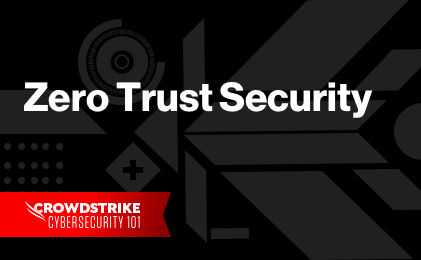What is the principle of least privilege (POLP)?
The principle of least privilege (POLP) is a computer security concept and practice that gives users limited access rights based on the tasks necessary to their job. POLP ensures only authorized users whose identity has been verified have the necessary permissions to execute jobs within certain systems, applications, data and other assets.
POLP is widely considered to be one of the most effective practices for strengthening the organization’s cybersecurity posture, in that it allows organizations to control and monitor network and data access.

The Complete Guide to Building an Identity Protection Strategy
Take the first step toward a resilient identity security posture and download the Complete Guide to Building an Identity Protection Strategy to protect your organization’s digital identity landscape today.
Download NowPrinciple of Least Privilege Explained
A significant number of breaches begin with unauthorized access through compromised credentials. By applying the principle of least privilege, organizations can limit the reach of user access into their network, systems and resources.
An administrator can attribute privileged access to a user account according to factors such as the user's location, their position in the company, and the time in which they log in.
Principle of Least Privilege Account Types
While account access is determined based on the needs of each individual, there are three main types of accounts:
Superuser accounts: A superuser account, or admin account, has the highest level of privilege. Typically, only administrators have access to this account type since they are the most “trusted” users within an organization and need high levels of access to perform network monitoring and maintenance. Superuser or admin privileges can include:
- Activating or deactivating other user accounts, including privileged accounts
- Removing data
- Installing and updating software and other applications
- Adjusting network settings
Least-privileged user accounts (LPUs): An LPU account offers users the bare minimum privileges necessary to complete routine tasks. This account type should be used by nearly all employees almost all of the time.
Guest user accounts: A guest user has less privileges than an LPU and is granted limited, temporary access to the organization’s network. In order to reduce risk, organizations should limit both the number of guests allowed to use their network and their access within the system.
What Is Privilege Creep?
Employees frequently change roles and responsibilities during their tenure. To perform tasks relevant to their updated roles, administrators need to re-evaluate or elevate necessary privileges.
While it is common for many organizations to add privileges to user accounts, it is somewhat rare for privileges to be revoked. As such, some standard users end up maintaining administrative access beyond what is needed to do their jobs. This results in unmonitored privilege escalation, or privilege creep. As users accumulate elevated privilege access, the organization becomes more vulnerable to cyberattacks, including data breaches. An adversary, armed with the compromised credential to the user whose access rights have been accumulated over a period of time, can move laterally across the network and execute threats like ransomware and supply chain attacks.
How to Implement Least Privilege
Effective POLP implementation undoubtedly strengthens an organization's cybersecurity strategy. Here are some ways in which organizations can reduce risk through the principle of least privilege:
Monitor endpoints: Perhaps the simplest way to implement POLP it to continuously monitoring and audit all endpoints and maintain an active endpoint inventory. This can help reduce the attack surface by eliminating unused endpoints, making it easier for the cybersecurity team to maintain visibility across the enterprise and monitor the network.
Conduct a privilege audit: User accounts across the organization should be regularly reviewed. A privilege audit includes checking their identity and their rights to the network, systems, software applications, processes, and programs. Regular audits monitor privilege delegation and escalation which, if left unchecked, can lead to privilege creep.
Default user access to minimal privileges: It is good practice for all accounts to be created with minimal privilege as a default setting. When a standard user is required to perform additional tasks, privileges can then be added. As noted above, it’s important to also revoke privileges when they are no longer needed to prevent privilege creep.
Follow segregation of privileges: Accounts can be separated into higher-level and lower-level privileges, and then segregated into further subgroups, based on the user’s role or location. These distinctions create hard boundaries between high privilege accounts and basic profiles which reduces an attacker’s ability to move laterally in the event of a data breach.
Harden systems: It is important to remove unnecessary programs, accounts, and systems. Not only does this reduce the attack surface, but the user environment also becomes less complex and thus more easily monitored.
Principle of least privilege is considered to be one of the most effective ways for organizations to control and monitor access to their networks, applications and data. This approach unlocks the following benefits:
- Reduced security risk: Cyber attackers can gain access to your system by silently infiltrating your network and elevating permissions for further access. By imposing POLP restrictions, the attack surface is reduced, minimizing the spread of breaches. Furthermore, privileged credentials can be closely monitored, making it more difficult for potential attackers to exploit them.
- Improved visibility: Thorough and regular privilege audits can give an organization a clear understanding of who is accessing the network and how users are behaving. If carried out effectively, organizations can maintain a strict oversight of all network users and devices, as well as their activity.
- Increased productivity: If users only have privilege access required to do their jobs, they are naturally likely to work more efficiently.
- Containment: By segmenting identities, organizations can effectively contain a potential security breach, reducing any potential damage. The ability to move laterally is restricted by hard boundaries between groups, making it easier to track down the intruder and stop the spread.
- Audit readiness: If implemented well, POLP can provide evidence for an organization's security posture. This supports accurate reporting and compliance with regulatory requirements.
Learn More
Network segmentation has been around for a while and is one of the core elements in the NIST SP 800-207 Zero Trust framework. Although network segmentation reduces the attack surface, this strategy does not protect against adversary techniques and tactics in the identity phases in the kill chain. Tighten your security posture with identity segmentation:
Download: Reducing the Attack Surface: Network Segmentation vs Identity Segmentation
Least Privilege Access and Zero Trust
Principle of least privilege is one of the foundational elements of Zero Trust. Zero Trust is a security framework requiring all users, whether in or outside the organization's network, to be authenticated, authorized and continuously validated for security configuration and posture before being granted or keeping access to applications and data.
Traditionally, organizations would use a “trust but verify” method of protection, automatically enabling users (depending on successful verification) to access networks and its systems. This method, albeit easier for users, puts the organization at greater risk of cyberattacks and malware spread.
In contrast, a Zero Trust framework “never trusts, always verifies.” This method of protection continuously monitors who has the appropriate privileges and access to networks.
The Zero Trust approach to cybersecurity is supported by the principle of least privilege. By implementing “never trust” security practices (for example, starting all users on a least-privilege account), organizations can constantly monitor and validate users and their devices - in real time, with risk-based conditional access.
It’s important to remember that principle of least privilege and Zero Trust architecture are just two aspects of a comprehensive cybersecurity strategy. While technology plays an important part in protecting the organization, digital capabilities alone will not prevent breaches. Companies must adopt a holistic security solution that incorporates a variety of endpoint and identity protection solutions to ensure the safety of their networks.
Expert Tip
Your Zero Trust strategy should reduce security complexity, improve user experience, and scale up as your business grows. Download our infographic and see where organizations like yours are in their Zero Trust journey, their preferred framework, key focus areas, and success metrics in operationalizing Zero Trust Security.







